#Environmental Conservation Tips
Text
Emotional Wellness Tips to Help You Reach Your Full Potential
Meet our expert guide, passionate about unlocking your full potential through Full Emotional Wellness Tips. With a focus on holistic well-being, our tips encompass emotional intelligence, self-care practices, and mindfulness techniques to empower you on your journey to peak performance. Discover the transformative power of Emotional Wellness Tips and embark on a fulfilling path towards your best self
#Emotional Wellness Tips#Social Skills Development#Social Connection Strategies#Love And Friendship Tips#Family Bonding Activities#Healthy Living Tips#Health Improvement Techniques#Fitness And Nutrition Advice#Environmental Conservation Tips#Building Healthy Relationships#Time Management Techniques#Fashion For Different Body Types#Online Learning Platforms#Fitness And Exercise
1 note
·
View note
Text
Saw a dead bird. It was only a baby, it didn’t have any feathers yet. It had been slashed up by a cat.
There was a dead cat on the road. Clearly someone’s pet, it looked pampered and well loved.
Keep cats inside for their safety and that of the native wildlife.
#cats#catblr#cat owner#cute cats#cat#cat tips#cat parent#important#conservation#environmental issues#psa#morbid midnight
13 notes
·
View notes
Text

"Bees are crucial for pollination and food production. Let's create bee-friendly gardens! 🐝🌼 #CleanEarthFunFacts #EcoFriendlyFacts"
#Clean Earth Fun Facts#Green Planet entertainment#Environmental awareness videos#Sustainable living tips#Eco-friendly facts#Conservation education#Climate change awareness#Earth Day celebrations#Renewable energy solutions#Entertaining facts about the environment
4 notes
·
View notes
Text
🌳🌲 Explore Saskatoon's parks & Win!
🌳🌲 Explore Saskatoon’s parks this July and win big with a social media selfie in the Green Network July programme! saskatoon.ca/ExploreParks
🚴♂️🚶♀️ Join us from July 10-17 for the Summer Historical Tour and discover the beauty of Richard St. Barbe Baker Afforestation Area and George Genereux Park. Take a selfie at these historic spots for a chance to win during Historic Places Days—don’t…
#ChatGPT Explore Saskatoon#Community Engagement#community initiatives#Conservation Efforts#eco-friendly tips#educational tours#environmental awareness#environmental stewardship#explore local history#family fun#Forest Sustainability#George Genereux Park#green initiatives#Green Living#Green Network Ride#historic landmarks#historic places days#Historical Sites#home energy resources#local heritage#National Forest Week#Nature Exploration#nature photography#Outdoor Activities#outdoor adventure#outdoor enthusiasts#outdoor recreation#park adventures#photography contest#Richard St. Barbe Baker AFforestation ARea
0 notes
Text
Cat Torture Ring in China is Sweeping Across the Internet – One Green Planet
New Post has been published on https://petn.ws/pYelu
Cat Torture Ring in China is Sweeping Across the Internet – One Green Planet
The issue of cat torture in China has gained international attention, with distressing reports and footage highlighting the severity of the problem. Across the internet, there are horrendous communities of people who are sharing their depraved instances of cat torture through videos and photos. In response, groups like Feline Guardians Without Borders and PETA are taking […]
See full article at https://petn.ws/pYelu
#CatsNews #AnimalConservation, #AnimalRescues, #ConsciousConsumerism, #ConsciousConsumers, #ConservationNews, #CrueltyFree, #EcoFriendlyLifestyle, #EcoFriendlyPetProducts, #EcoFriendlyFashion, #EcofriendlyShopping, #EnvironmentalNews, #GlutenFreeRecipes, #GMOFREE, #GoGreen, #GreenFashion, #GreenLiving, #GreenNews, #GreenTips, #PlantBasedHealth, #PlantBasedLifestyle, #PlantBasedRecipes, #RawLifestyle, #RawVeganRecipes, #Recycling, #SocialJustice, #Sustainability, #VeganDesserts, #VeganDiet, #VeganFashion, #VeganHealth, #VeganMeals, #VeganProducts, #VeganProteinPowders, #VeganRecipesVeganFood, #VeganSupplements, #Veganism, #VegetarianFood
#animal conservation#animal rescues#conscious consumerism#conscious consumers#conservation news#cruelty free#eco friendly lifestyle#eco friendly pet products#eco-friendly fashion#ecofriendly shopping#environmental news#gluten free recipes#GMO FREE#go green#green fashion#green living#green news#green tips#plant based health#plant based lifestyle.#plant based recipes#raw lifestyle#raw vegan recipes#recycling#social justice#sustainability#vegan desserts#vegan diet#vegan fashion#vegan health
1 note
·
View note
Text
Preserving Our Natural Heritage: Tips for Saving Wildlife
Shaina Tranquilino
November 19, 2023
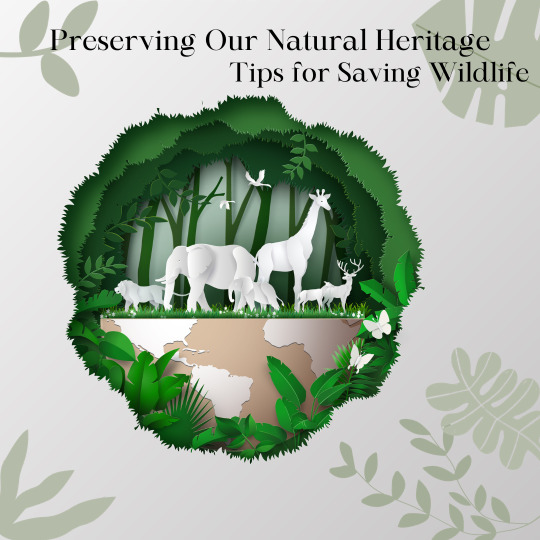
The world we live in is incredibly diverse, with an abundance of incredible wildlife species that captivate our imaginations and contribute to the delicate balance of ecosystems. However, many of these creatures are facing significant threats due to habitat loss, climate change, pollution, and poaching. As responsible stewards of this planet, it is crucial for us to take action and play our part in conserving and protecting wildlife. In this blog post, we will discuss some effective ways to save wildlife.
1. Support Conservation Organizations:
Numerous organizations around the globe work tirelessly towards preserving biodiversity and safeguarding endangered species. By supporting reputable conservation groups through donations or volunteering opportunities, you can contribute directly to their efforts. Examples include World Wildlife Fund (WWF), International Union for Conservation of Nature (IUCN), and local initiatives such as community-based conservation programs.
2. Promote Sustainable Living:
Our individual actions have a collective impact on the health of our environment. Embracing a sustainable lifestyle can help minimize damage to ecosystems and preserve habitats for various wildlife species. Reduce your carbon footprint by using energy-efficient appliances, driving less or opting for public transport, recycling and composting waste materials, and choosing eco-friendly products whenever possible.
3. Preserve Natural Habitats:
Habitat destruction remains one of the leading causes of declining wildlife populations worldwide. Take steps to protect natural habitats within your surroundings – whether it be forests, wetlands, or grasslands – by participating in habitat restoration projects or advocating for the preservation of green spaces in your community.
4. Avoid Single-Use Plastic:
Plastic pollution poses a severe threat to marine life and terrestrial animals alike. Refusing single-use plastics and packaging can significantly reduce pollution levels in oceans and landfills. Instead, opt for reusable alternatives such as stainless steel water bottles.
5. Educate and Raise Awareness:
Increasing awareness about the importance of wildlife conservation is essential for long-term change. Share your knowledge with others, engage in discussions, and participate in educational events. Encourage friends, family, and colleagues to watch documentaries or read books on wildlife preservation. By spreading information and inspiring others, we can create a ripple effect that contributes to saving wildlife.
6. Support Sustainable Tourism:
When travelling, choose responsible tourism operators who prioritize wildlife conservation and minimize their environmental impact. Avoid activities that exploit animals or disturb their natural habitats. Instead, opt for eco-tours that prioritize education and respect for wildlife while contributing to local economies in sustainable ways.
7. Be Mindful of Wildlife Products:
Avoid purchasing products made from endangered plants or animals such as ivory, fur, or exotic species kept as pets. The illegal wildlife trade is a significant contributor to species decline globally; by refusing to support this industry, you help protect vulnerable creatures.
Preserving our planet's biodiversity is both a collective responsibility and an urgent necessity. By incorporating these practices into our daily lives, we can make a tangible difference in the fight to save wildlife populations worldwide. Remember that every small action counts! Let us unite in safeguarding the incredible diversity of life on Earth for future generations to enjoy and appreciate.
#preserving nature#saving wildlife#protecting our heritage#conservation tips#biodiversity matters#sustainable living#wildlife protection#nature lovers unite#environmental awareness#save the animals#go green for wildlife#preserve and protect
1 note
·
View note
Text
Make a difference in just 60 seconds! 🌍 In today's YouTube Short, discover an easy yet powerful eco-tip that you can incorporate into your daily life to help our planet. Accompanied by engaging visuals, this short video demonstrates a simple action with a significant positive impact on the environment. Whether you're a seasoned eco-warrior or just starting your journey towards a more sustainable lifestyle, this tip is practical, doable, and effective for everyone. 🍃 Like, subscribe, and share to spread the eco-awareness. Comment below how you're making a difference! Stay tuned for more quick, eco-friendly tips. #EcoFriendlyTips, #SustainableLiving, #EnvironmentallyFriendly, #GreenTips, #Shorts, #NatureLovers, #EcoLiving, #SaveThePlanet, #DailyEcoTips, #Sustainability, #GoGreen, #EcoConscious, #SimpleEcoActions, #GreenLiving, #EarthFriendly
#Eco Tips#Sustainable Living#Environmentally Friendly Actions#Green Living Short#Easy Sustainability Tips#Eco-Friendly Lifestyle#Quick Eco Tips#Daily Sustainability#Nature Conservation#Save The Planet#Eco Hacks#Green Lifestyle#Environmental Tips#Short Video Content#Positive Environmental Impact#Earth Care#Sustainability in Daily Life#Eco Conscious Living#Green Solutions#Simple Eco Tips
0 notes
Text
Radiate Light, Not Pollution: Eco-Friendly Diwali Celebrations
Festivals / By lovenheal
Introduction
Diwali, the festival of lights, is celebrated with enthusiasm and joy all over the world. While the exchange of gifts, colorful decorations, and the lighting of diyas (oil lamps) are all part of the festivity, it’s essential to remember the impact of our celebrations on the environment. This Diwali, let’s make a conscious choice to celebrate in an eco-friendly manner. In this blog, we’ll explore the significance of eco-friendly Diwali celebrations and share practical tips to help you enjoy a sustainable and environmentally responsible festival.
The Significance of Eco-Friendly Diwali Celebrations
Diwali symbolizes the triumph of light over darkness and good over evil. What better way to honor this symbolism than by embracing eco-friendly practices? Here are some compelling reasons to celebrate an eco-friendly Diwali:
Reducing Air Pollution: Firecrackers are a significant source of air pollution, emitting harmful chemicals and particulate matter. Opting for eco-friendly alternatives helps reduce air pollution and its adverse effects on health.
Minimizing Noise Pollution: Traditional firecrackers are often deafeningly loud, causing distress to animals and people with noise sensitivities. Eco-friendly options produce minimal noise, making the festival more peaceful and enjoyable for everyone.
Conserving Resources: The production and disposal of firecrackers consume valuable resources. Eco-friendly practices, on the other hand, conserve resources, such as water, energy, and raw materials.
Preserving Wildlife: The loud noise and air pollution from fireworks can disrupt and harm wildlife. Eco-friendly Diwali celebrations show respect for the planet’s inhabitants.
Setting an Example: Celebrating Diwali in an eco-friendly way sets a positive example for future generations. It fosters a sense of responsibility and awareness about environmental issues.
Tips for Eco-Friendly Diwali Celebrations
Eco-Friendly Firecrackers: If you enjoy fireworks, consider using eco-friendly firecrackers. These emit fewer pollutants and noise, making them a better choice for the environment and your community.
Opt for Diyas: Instead of using electric lights and extravagant decorations, go for traditional diyas and earthen lamps. They not only add a warm, welcoming glow but also support local artisans.
Eco-Friendly Rangoli: Create rangoli designs using natural materials like flower petals, rice, or colored sand. These eco-friendly alternatives are biodegradable and visually stunning.
Sustainable Gifts: Choose eco-friendly gifts such as potted plants, organic products, or handmade items. Avoid plastic-wrapped or non-recyclable gifts.
Conserve Energy: Limit the use of electric lights and decorations. Opt for LED lights, which consume less energy and last longer. Turn off lights during the day to save electricity.
Donate and Share: Consider donating to a cause or sharing your Diwali feast with those in need. It’s a beautiful way to spread the joy and happiness of the season.
Recycle and Reuse: When the festivities are over, recycle materials like paper, glass, and plastic. Store decorations and diyas for future celebrations to minimize waste.
Eco-Friendly Packaging: If you give gifts, use eco-friendly wrapping paper or reusable cloth bags. Avoid excessive packaging and plastic wrap.
Respect Noise Ordinances: Abide by local regulations regarding noise pollution. Choose eco-friendly firecrackers that produce minimal noise if fireworks are allowed.
Conclusion
Diwali is a time for family, friends, and love. Let’s extend that love to the planet we call home. By embracing eco-friendly Diwali celebrations, we not only honor the spirit of the festival but also take responsibility for our environment. It’s an opportunity to create beautiful memories, enjoy the glow of diyas, and share happiness while ensuring a brighter and more sustainable future for all. This Diwali, let your celebrations shine in an eco-friendly and environmentally conscious way.
ReachLovenHeal Pvt Ltd ( Reiki Healing, Reiki Courses, Black Magic Reversal ), Pune, Maharashtra, India.
Lovenheal Reiki healing Center in Pune is one of the best places for Reiki healing in India. The center offers Reiki training, healing sessions, and workshops. It has a team of experienced Reiki masters who have helped many people heal from various ailments. The center also offers distance healing for people who cannot visit in person.
Lovenheal Reiki healing Center in Pune is experienced Reiki practitioners who provide healing sessions to clients. Lovenheal also offers Reiki training for those who want to learn this technique.
The team of Reiki masters at the center is dedicated to helping clients achieve physical, emotional, and spiritual balance.
Get connected to LovenHeal 🎀
📷 Instagram: Login • Instagram
📲 Facebook: LovenHeal | Pune
🎥 YouTube: Reachlovenheal
☎️ Ph no. 8956256919
Celebrate Diwali Responsibly, Diwali and Environmental Sustainability, Diwali Conservation Efforts, Diwali Eco-Activism, Diwali Pollution Control, Eco-Conscious Diwali, Eco-Conscious Diwali Celebrations, Eco-Friendly Diwali, Eco-Friendly Diwali Gifting, Eco-Friendly Diwali Initiatives, Eco-Friendly Diwali Pledge, Eco-Friendly Diwali Tips, Eco-Friendly Firecrackers, Eco-Friendly Rangoli Ideas, Environmentally Aware Diwali, Environmentally Friendly Diwali, Green Alternatives for Diwali, Green Diwali, Green Diwali Practices, Greening Your Diwali Celebration, Not Pollution: Eco-Friendly Diwali Celebrations, Radiate Light, Reducing Diwali Carbon Footprint, Responsible Diwali Lighting, Sustainable Diwali, Sustainable Diwali Decorations, Sustainable Festive Season
#Celebrate Diwali Responsibly#Diwali and Environmental Sustainability#Diwali Conservation Efforts#Diwali Eco-Activism#Diwali Pollution Control#Eco-Conscious Diwali#Eco-Conscious Diwali Celebrations#Eco-Friendly Diwali#Eco-Friendly Diwali Gifting#Eco-Friendly Diwali Initiatives#Eco-Friendly Diwali Pledge#Eco-Friendly Diwali Tips#Eco-Friendly Firecrackers#Eco-Friendly Rangoli Ideas#Environmentally Aware Diwali#Environmentally Friendly Diwali#Green Alternatives for Diwali#Green Diwali#Green Diwali Practices#Greening Your Diwali Celebration#Not Pollution: Eco-Friendly Diwali Celebrations#Radiate Light#Reducing Diwali Carbon Footprint#Responsible Diwali Lighting#Sustainable Diwali#Sustainable Diwali Decorations#Sustainable Festive Season
0 notes
Text
Conserve Energy, Conserve the Planet: A Call to Action

In our everyday actions, we often overlook the impact they have on our planet. From the flick of a light switch to the turn of a key in an ignition, we consume energy derived from precious resources, which in turn contributes to climate change, dwindling ecosystems, and the loss of species. However, we have the power to change this narrative. By conserving energy, we can create a brighter, cleaner, and more sustainable future for ourselves and generations to come. Let's explore some simple yet effective ways to conserve energy and protect our planet.
Small Changes, Big Impact:
Conserving energy doesn't have to be complicated or burdensome. It starts with small changes in our daily lives. Turn off lights and appliances when not in use, opt for energy-efficient products, and consider alternative modes of transportation such as biking or public transit. These simple steps can make a significant difference in reducing our energy consumption and carbon footprint.
Embracing Renewable Energy:
Supporting renewable energy sources is another crucial aspect of conserving energy. By embracing solar and wind power, we can reduce our dependence on fossil fuels and contribute to a more sustainable energy future. Consider investing in solar panels for your home or advocating for renewable energy policies in your community. Together, we can create a greener and healthier planet.
Reducing Single-Use Products:
A lesser-known aspect of energy conservation is reducing our reliance on single-use products. Items like plastic bags and disposable utensils not only contribute to waste but also require a considerable amount of energy to produce and dispose of. By opting for reusable alternatives, we not only save energy but also help protect our natural resources and mitigate climate change.
Advocating for Change:
Energy conservation goes beyond our individual actions. It requires collective efforts and advocacy for change on a larger scale. Support political initiatives and policies that prioritize renewable energy sources. Encourage businesses and organizations to adopt sustainable practices. By raising our voices and working together, we can create a more sustainable future for ourselves and generations to come.
Testimonials from Youth Changemakers:
To inspire and motivate youth to save the environment and energy, let's hear from some young changemakers who have made a significant impact:
"I realized that every time I turned off unnecessary lights, I was not only saving energy but also contributing to a healthier planet. It's empowering to know that my small actions matter." - Greta Thunberg, 20, Sweden.
"By installing solar panels on our school rooftop, we not only reduced our energy costs but also taught the entire school community about the benefits of renewable energy. We are showing that sustainability is achievable." - Licypriya Kangujam, 11, India.
"Switching to a bike for my daily commute not only saves me money but also reduces my carbon footprint. It's amazing how a simple change can have such a positive impact on the environment." - Isra Hirsi, 20, United States.
"Through our environmental club, we organized a campaign to reduce single-use plastic on campus. Seeing the positive response from students and staff made me realize the power of collective action in conserving energy and protecting our planet." - Melati Wijsen, 22, Indonesia.
#manage e waste in india#manage e waste examples#10 ways to reduce e waste#manage e waste essay#manage e waste project#how to manage e waste class 12#how to recycle e waste#how to reduce e waste essay#Environmental conservation organizations#Sustainable initiatives#Environmental protection programs#Eco-friendly solutions#Conservation projects#Environmental education#Nature preservation efforts#Environmental awareness campaigns#Green living tips#Climate change mitigation#Wildlife conservation initiatives#Eco-conscious practices#Environmental stewardship#Renewable energy solutions#Environmental advocacy#EnergyConservationMatters#SaveEnergySavePlanet#ConserveForFutureGenerations#SustainableLivingNow#GoGreenConserveEnergy#EcoConsciousChoices#PowerOfConservation
0 notes
Text
Is Everyone a Climate Changer?
Introduction
Climate Change is a short term with a big impact. It refers to long-term shifts in temperatures and weather patterns. These shifts may be natural, but since the 1800s, human activities have been the main driver of climate change, primarily due to the burning of fossil fuels (like coal, oil, and gas), which produce heat-trapping gases like Carbon dioxide and methane. These gases are the cause of Global Warming. This further leads to the melting of glaciers which causes a rise in water level every year.
Where do we step in…...
Now, one might ask if he/she is connected to this. The answer is a big YES. Everyone from rich to poor, short to tall, fat to slim is responsible for the climate change happening around us. They are unknowingly a reason for climate change whether it is positive or negative. Yes, climate change can be both negative and positive]. For those of you wondering what positive climate change is, they are the impacts of climate change which are beneficial for us.
A mind-boggling FACT.
Let’s talk about an average person’s morning routine. He/she wakes up, brushes their teeth, takes a bath, eats breakfast and gets on any means of transport to get to their work. Even in this short 3-4 hours of the time gap, the person has created an impact towards climate change. For example, when he/she brushes their teeth the amount of water they use is a key factor in CC because if they use a greater quantity of water, the purification company would have to use more of their factories to purify them. Now, some of you might think that if they waste just 20-30 ml of water it is not going to make a difference but wait let me show you how cool maths is. Let’s say each person wastes only 1ml of water every day (which is less and not true at all) and only 1 billion out of the 8 billion people on this planet waste it. So now each day 1,000,000,000 ml or 1 million litres of water is getting wasted. And again, this is not even the accurate results. So, you see how such a small thing created such a massive impact on climate. These small things when compiled make big impacts.
Similarly, if we put this vice-versa then if a person only saves 1 ml of water each day and only 1 billion out of 8 billion people on this planet do so, we all will be able to save about 1 million litres of water every day. This was only the start of your day.
Conclusion
Let’s take one more example. Let's say you travel to your workplace or school in your car or scooter. We all know that burning fuel releases greenhouse gases into the environment. If one person goes in one car and the second one goes in another car to the same place. That is 2x emission of harmful gases. But let’s say they both go in one car; it will reduce the emission by half. These are just some short instances from our daily life which lead us as a changing factor in the climate change journey. So by just thinking about it for some time, we can give our efforts to the planet and climate itself
BIBLIOGRAPHY
https://www.co2nsensus.com/blog/countries-generating-carbon-credits
youtube
#manage e waste in india#manage e waste examples#10 ways to reduce e waste#manage e waste essay#manage e waste project#how to manage e waste class 12#how to recycle e waste#how to reduce e waste essay#Environmental conservation organizations#Sustainable initiatives#Environmental protection programs#Eco-friendly solutions#Conservation projects#Environmental education#Nature preservation efforts#Environmental awareness campaigns#Green living tips#Climate change mitigation#Wildlife conservation initiatives#Eco-conscious practices#Environmental stewardship#Renewable energy solutions#Environmental advocacy#Youtube
0 notes
Text
Welcome to the Climate Change Quiz!

This quiz will test your knowledge about climate change and provide you with insightful facts and tips on how you can contribute to a more sustainable future. Let's get started!
Question 1: What is the main cause of climate change?
a) Volcanic activity
b) Solar radiation
c) Greenhouse gas emissions from human activities
d) Natural climate cycles
Question 2: Which greenhouse gas is primarily responsible for global warming?
a) Carbon dioxide (CO2)
b) Methane (CH4)
c) Nitrous oxide (N2O)
d) Ozone (O3)
Question 3: What is the term used to describe the gradual increase in the Earth's average temperature?
a) Global warming
b) Climate change
c) Ozone depletion
d) Acid rain
Question 4: How does deforestation contribute to climate change?
a) By releasing greenhouse gases during forest fires
b) By reducing the Earth's carbon sink
c) By destroying habitats for animal species
d) By increasing water pollution
Question 5: Which of the following is an example of a renewable energy source?
a) Coal
b) Natural gas
c) Solar power
d) Nuclear power
Question 6: What is the largest source of marine pollution?
a) Plastic waste
b) Oil spills
c) Industrial waste
d) Sewage and wastewater
Question 7: What is the concept of "reduce, reuse, recycle" aimed at?
a) Conserving water resources
b) Reducing greenhouse gas emissions
c) Minimizing waste generation
d) Promoting sustainable agriculture
Question 8: How can individuals reduce their carbon footprint?
a) Eating a plant-based diet
b) Using public transportation
c) Conserving energy at home
d) All of the above
Question 9: What is the significance of the Paris Agreement?
a) It aims to limit global temperature rise to well below 2 degrees Celsius
b) It encourages countries to transition to renewable energy sources
c) It promotes international cooperation to address climate change
d) All of the above
Question 10: What is the role of forests in mitigating climate change?
a) They absorb carbon dioxide through photosynthesis
b) They provide habitats for endangered species
c) They regulate water cycles and prevent floods
d) All of the above
Great job! Now let's check your answers and provide you with some insights.
Answer 1: c) Greenhouse gas emissions from human activities
Insight: Human activities, such as burning fossil fuels and deforestation, release greenhouse gases into the atmosphere, leading to climate change.
Answer 2: a) Carbon dioxide (CO2)
Insight: Carbon dioxide is the most prevalent greenhouse gas and is primarily responsible for global warming.
Answer 3: a) Global warming
Insight: Global warming refers to the long-term increase in the Earth's average temperature, largely due to human activities.
Answer 4: b) By reducing the Earth's carbon sink
Insight: Deforestation reduces the Earth's capacity to absorb carbon dioxide, contributing to increased greenhouse gas concentrations.
Answer 5: c) Solar power
Insight: Solar power is a renewable energy source that harnesses the sun's energy to generate electricity without producing greenhouse gas emissions.
Answer 6: a) Plastic waste
Insight: Plastic waste is a major contributor to marine pollution, posing significant threats to marine life and ecosystems.
Answer 7: c) Minimizing waste generation
Insight: The concept of "reduce, reuse, recycle" aims to minimize waste generation and promote resource conservation.
Answer 8: d) All of the above
Insight: Individuals can reduce their carbon footprint by adopting multiple actions, such as eating a plant-based diet, using public transportation, and conserving energy at home. These actions collectively contribute to mitigating climate change.
Answer 9: d) All of the above
Insight: The Paris Agreement is a landmark international agreement that aims to limit global temperature rise to well below 2 degrees Celsius, encourages countries to transition to renewable energy sources, and promotes international cooperation to address climate change.
Answer 10: d) All of the above
Insight: Forests play a vital role in mitigating climate change. They absorb carbon dioxide through photosynthesis, provide habitats for endangered species, regulate water cycles, and help prevent floods.
Congratulations on completing the Climate Change Quiz! You now have a better understanding of climate change and ways to contribute to a more sustainable future. Remember to apply these insights to your daily life and encourage others to join in creating a greener and more sustainable world. Together, we can make a difference!
#Clean Earth#Green Planet#Fun Facts#Environmental Awareness#Sustainable Living#Eco-friendly Tips#Conservation#Climate Change#Earth Day#Renewable Energy
5 notes
·
View notes
Text
Is Everyone a Climate Changer?
Introduction
Climate Change is a short term with a big impact. It refers to long-term shifts in temperatures and weather patterns. These shifts may be natural, but since the 1800s, human activities have been the main driver of climate change, primarily due to the burning of fossil fuels (like coal, oil, and gas), which produce heat-trapping gases like Carbon dioxide and methane. These gases are the cause of Global Warming. This further leads to the melting of glaciers which causes a rise in water level every year.
Where do we step in…...
Now, one might ask if he/she is connected to this. The answer is a big YES. Everyone from rich to poor, short to tall, fat to slim is responsible for the climate change happening around us. They are unknowingly a reason for climate change whether it is positive or negative. Yes, climate change can be both negative and positive]. For those of you wondering what positive climate change is, they are the impacts of climate change which are beneficial for us.
A mind-boggling FACT.
Let’s talk about an average person’s morning routine. He/she wakes up, brushes their teeth, takes a bath, eats breakfast and gets on any means of transport to get to their work. Even in this short 3-4 hours of the time gap, the person has created an impact towards climate change. For example, when he/she brushes their teeth the amount of water they use is a key factor in CC because if they use a greater quantity of water, the purification company would have to use more of their factories to purify them. Now, some of you might think that if they waste just 20-30 ml of water it is not going to make a difference but wait let me show you how cool maths is. Let’s say each person wastes only 1ml of water every day (which is less and not true at all) and only 1 billion out of the 8 billion people on this planet waste it. So now each day 1,000,000,000 ml or 1 million litres of water is getting wasted. And again, this is not even the accurate results. So, you see how such a small thing created such a massive impact on climate. These small things when compiled make big impacts.
Similarly, if we put this vice-versa then if a person only saves 1 ml of water each day and only 1 billion out of 8 billion people on this planet do so, we all will be able to save about 1 million litres of water every day. This was only the start of your day.
Conclusion
Let’s take one more example. Let's say you travel to your workplace or school in your car or scooter. We all know that burning fuel releases greenhouse gases into the environment. If one person goes in one car and the second one goes in another car to the same place. That is 2x emission of harmful gases. But let’s say they both go in one car; it will reduce the emission by half. These are just some short instances from our daily life which lead us as a changing factor in the climate change journey. So by just thinking about it for some time, we can give our efforts to the planet and climate itself
BIBLIOGRAPHY
https://www.co2nsensus.com/blog/countries-generating-carbon-credits
youtube
#manage e waste in india#manage e waste examples#10 ways to reduce e waste#manage e waste essay#manage e waste project#how to manage e waste class 12#how to recycle e waste#how to reduce e waste essay#Environmental conservation organizations#Sustainable initiatives#Environmental protection programs#Eco-friendly solutions#Conservation projects#Environmental education#Nature preservation efforts#Environmental awareness campaigns#Green living tips#Climate change mitigation#Wildlife conservation initiatives#Eco-conscious practices#Environmental stewardship#Renewable energy solutions#Environmental advocacy#Youtube
0 notes
Text
Good News - May 15-21
Like these weekly compilations? Support me on Ko-fi! Also, if you tip me on Ko-fi, at the end of the month I'll send you a link to all of the articles I found but didn't use each week - almost double the content!
1. Translocation of 2,000 rhinos in Africa gets underway in “one of the most audacious conservation efforts of modern times”
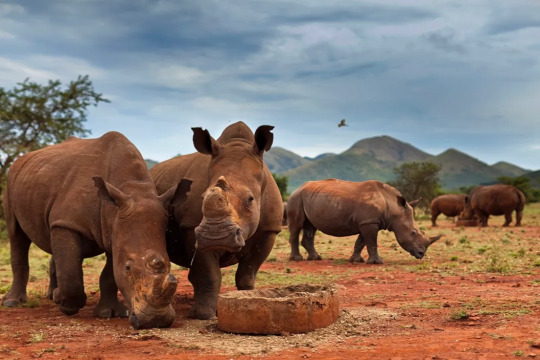
“The 2,000 rhinos - more than are currently found in any single wild location in Africa - represent around 12-15% of the continent’s remaining white rhino population. […] “Rhinos perform an important ecological function in the environment as a large grazing herbivore,” says Dale Wepener[….] “The protection of rhino is far more than just looking after rhino; other species that occur in the protected areas will benefit from the protection,” explains Jooste. “This will lead to an increase in diversity and result in much healthier ecosystems.”
2. Florida Corridor Buffers Effects of Climate Change on Wildlife — And People
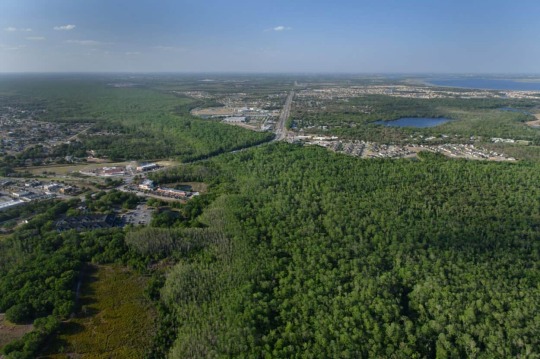
“A massive multi-partner effort that has conserved 10 million acres for wildlife in Florida over past decades will help buffer wildlife—and people—from the effects of climate change, a new report says. […] Protecting these corridors is important for wildlife genetics, demography and connectivity […], conducting prescribed fires in the corridor can reduce the risk of more intense wildfires [… and] they can provide buffers against hurricanes and seasonal thunderstorms.”
3. Global life expectancy to increase by nearly 5 years by 2050 despite geopolitical, metabolic, and environmental threats
“Increases are expected to be largest in countries where life expectancy is lower, contributing to a convergence of increased life expectancy across geographies. The trend is largely driven by public health measures that have prevented and improved survival rates from cardiovascular diseases, COVID-19, and a range of communicable, maternal, neonatal, and nutritional diseases (CMNNs).”
4. Valencia has Spain’s longest urban park

“Jardin del Turia (Turia Garden) is the green spine of the City of Valencia and Spain’s (and possibly Europe’s) longest urban park stretching for a length of 8.5 kilometres [… and] the current administration plans to make Jardin del Turia Europe’s largest city green space by extending it to the sea[….] Almost all Valencia residents (97 per cent) live within 300 metres of an urban green space. […] Jardin del Turia is a true urban oasis that provides exceptional thermal comfort, with a temperature difference of up to three degrees compared to other areas of the city.”
5. This Paint Could Clean Both Itself and the Air
“When an artificial ultraviolet light source shines on [photocatalytic] paint, the nanoparticles react with pollutants to make them break down—theoretically removing them from the nearby air and preventing a discoloring buildup. [… R]esearchers developed a new photocatalytic paint that they claim works using UV rays from ordinary sunlight, making its self-cleaning properties easier to activate. They’ve also shown that they can effectively produce this paint from recycled materials [including fallen leaves].”
6. Planting Seedlings for a Cooler Rockingham
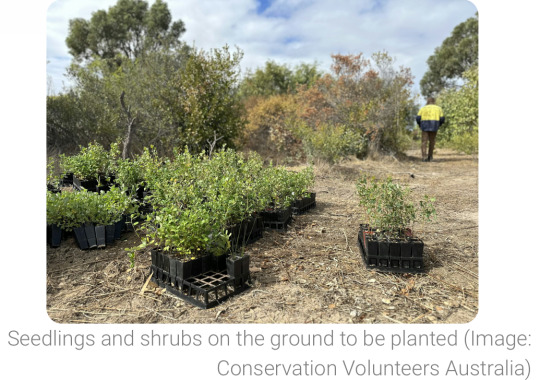
“A dedicated group of volunteers recently planted over a thousand native seedlings in Lewington Reserve [… and] re-established canopy cover to areas of the reserve to create cooling shade for the local community and provide homes for native wildlife. […] Planting lots of trees and shrubs in urban areas can help create shade and cool cities, mitigating the impacts of climate change, contributing to biodiversity conservation and building greener, more resilient communities.”
7. Sydney’s first dedicated affordable housing for trans women designed to deliver ‘positive outcomes’

“Community housing provider and charity Common Equity NSW, […] which is for people on very low to moderate incomes, prides itself on creating inclusive living and promotes the independence and well-being of people and communities […, and] will deliver the first-of-its-kind social housing in a bid to provide a safe place to live for transgender women seeking an affordable home.”
8. Rewilding: How a herd of bison reintroduced to Romania is helping ‘supercharge’ carbon removal
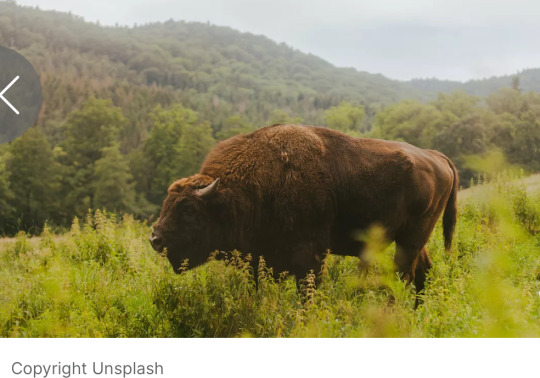
“170 European Bison reintroduced to Romania’s Țarcu mountains could help capture and store the carbon released by up to 84,000 average US petrol cars each year. […] By grazing a 48 square kilometre area of grassland in a wider landscape of 300 kilometres squared, they helped to capture an additional 54,000 tonnes of carbon each year. That is around 10 times the amount that would be captured by the ecosystem without the bison.”
9. World’s biggest grids could be powered by renewables, with little or no storage
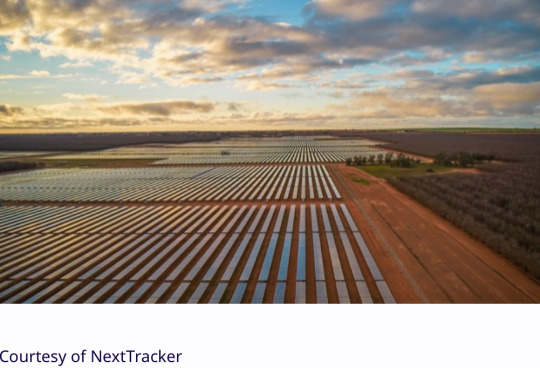
“[…] 100% renewable supply can then match the load by putting surplus electricity into two kinds of distributed storage worth that [an energy expert] says are worth buying anyway – ice-storage air-conditioning and smart bidirectional charging of electric cars, and recover that energy when needed, filling the last gaps with unobtrusively flexible demand.”
10. Supporting the Long-Term Survival of Copper River Salmon and Alaska Native Traditions
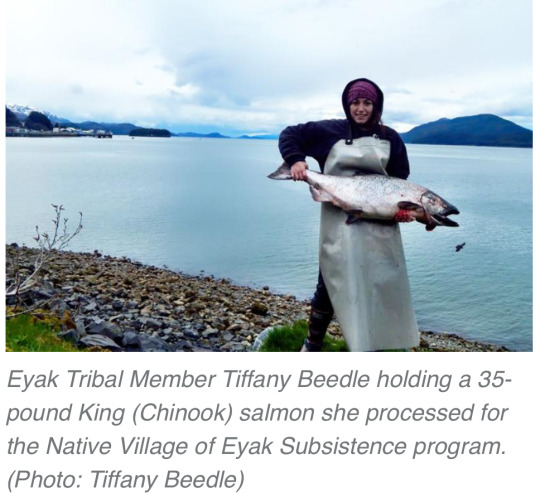
“With $4.3 million in NOAA funds, the Copper River Watershed Project and The Eyak Corporation will remove fish passage barriers, opening more streams for salmon spawning and subsistence fishing. [… As part of this effort, o]ld narrow culverts that constrict water flow will be replaced with “stream simulation” culverts wide enough to fit the full stream, including its banks. They are also deep to allow contractors to place stones and other material inside to mimic a natural stream bottom.”
May 8-14 news here | (all credit for images and written material can be found at the source linked; I don’t claim credit for anything but curating.)
#hopepunk#good news#rhino#white rhino#africa#conservation#rewilding#climate change#florida#wildlife#life expectancy#health#spain#green space#urban parks#recycling#trees#global warming#trans#affordable housing#australia#bison#romania#carbon#carbon capture#renewableenergy#reforestation#salmon#alaska native#nature
383 notes
·
View notes
Note
I'm a student about to start my second year, and me and all my friends are really nervous. It feels like first year was really rough for everyone all over the place and we're all really hoping for a better second year this year! Have lecturers been noticing that too? Do you think it's because of COVID?
Oh my god yes. Jesus yes. It's absolutely the covid effect, and we're expecting to see the disruption for the next five or so years, tbh - the current 18-21 year old undergrads went through the most important years of high school during a lockdown. That not only interrupted academic development (home schooling during a time of stress, massive disruption to exams and exam-taking skills, etc), it also enormously hit emotional development (mid to late teens have the highest socialising needs of the human lifespan, and no one could meet and interact with each other.) And that latter point is having a much bigger effect than the former.
Current undergrads haven't been able to develop the same resilience, the same approach to andragogic education, the same interpersonal skills for dealing with lecturers/fellow students. University is not like school; in school teachers are giving you the knowledge, and gradually encouraging you to try and use it to formulate your own opinions. In university, we're supposed to give you the framework to then go out and do you own research. The bulk of your education comes from you, not us; we're more like facilitators.
But, we're noticing that there's a far bigger skew now towards needing to get the answer right. Anxiety is higher, and so the fear of being wrong is much more crippling for these students, and that in turn means they're less willing/able to take charge of their own education and are more passive with it, wanting to just be fed the right answers so they can rote learn them and get the Good mark. And the disconnect between that and the reality of what lecturers are expecting is pretty big, it turns out, and is causing even more anxiety and stress. Record numbers of my students have started asking me to give their assignment drafts a quick look over, just to see if they're on the right track. Which, you know, I'm more than happy to do; but I do think it's a notable pattern change from three or four years ago.
If you're worrying on a personal level though, Anon, I have some Handy Tips if they're any use!
Remember: the idea of uni is that you are doing your own research and learning on the topics your lecturers describe. They're giving you the basics, but they're expecting you to look up examples, case studies, other research papers, etc. They want to see analysis. That's what gets you the good marks. If you simply describe the information you got in lectures and don't add anything, you'll struggle to rise out of a basic pass.
What's the fundamental point of your particular course? It's important to know this, because it'll tell you how to focus your assessments and exam answers. Just within the environmental sector, you could have Environmental Science (focus: academic exploration and research), Environmental Conservation (focus: applying the academic research to actual management and solutions), Environmental Impacts (focus: philosophy and ethics), etc. In all three, you might be given a paper about the latest IPCC report, but in the first you would focus on exploring all the research papers that formed the conclusion on climate change, in the second you'd focus on case studies around the world and the applicability/feasibility of the shared economic pathways that are going to fix the problem, and in the third you'd focus on the human impacts of both the problem and the proposed solutions. You may of course include elements of all of those, but your main focus should be chosen appropriately.
Keep your notes with copies of the lecture slides in nice ordered folders. Keep a bulleted list of the topics covered in each. This makes it far easier to go and double check the right info when you're stressed out
On that note, the best note-taking system is to add notes/comments to the lecture slides where you record clarifications and things the lecturer said (INCLUDING CASE STUDIES). Don't bother duplicating effort by writing what's on the slide.
I truly do know this is easier said than done, but don't leave your assignments until the last minute. Are you struggling with motivation? You need a study group. You need to body double.
And finally, the biggest: CONTACT STUDENT SUPPORT IF YOU ARE STRUGGLING. Every time I go to an exam board and we get to a student who has failed stuff, the first question the Academic Office asks is "Has this student been working with Student Support?" Even if they aren't that helpful in your uni, working with them means they know about the things you're struggling with, and that you've clearly been trying to work around the problems. That makes the Academic Office far, far more likely to take a lenient view of a student, rather than going "Well, clearly they just don't care then, withdraw them from the program." Your Student Support should be able to help you with counselling, study buddies, a support worker that can help you organise your time and interpret your assignment briefs correctly and give you interim deadlines, etc.
Oh, and remember to schedule in rest and downtime, just as much as study time.
And... honestly, you learned a lot in your first year. The learning curve is less steep in second year, even accounting for the academic rigour increasing. By now, you're basically used to things like referencing, routines, assignment formatting, etc. There are no more surprises, really. Now's the point you can get the bit between your teeth and run.
Anyway: good luck! And enjoy it as much as you can. University is hard, no doubt about that, but it can and should be fun as well.
433 notes
·
View notes
Text
Three-Legged Dog Rescued by a Woman with Another Disabled Rescue Dog – One Green Planet
New Post has been published on https://petn.ws/LqCp3
Three-Legged Dog Rescued by a Woman with Another Disabled Rescue Dog – One Green Planet
Pippa, a resilient three-legged dog, has captured hearts after her remarkable journey from the streets to a loving home. Found in 2017 with severe injuries in New Orleans, Pippa was rescued by the Southern Animal Foundation. Following the amputation of her leg and tail, and months of rehabilitation, she was ready for adoption. Lydia Crochet, […]
See full article at https://petn.ws/LqCp3
#DogNews #AnimalConservation, #AnimalRescues, #ConsciousConsumerism, #ConsciousConsumers, #ConservationNews, #CrueltyFree, #EcoFriendlyLifestyle, #EcoFriendlyPetProducts, #EcoFriendlyFashion, #EcofriendlyShopping, #EnvironmentalNews, #GlutenFreeRecipes, #GMOFREE, #GoGreen, #GreenFashion, #GreenLiving, #GreenNews, #GreenTips, #PlantBasedHealth, #PlantBasedLifestyle, #PlantBasedRecipes, #RawLifestyle, #RawVeganRecipes, #Recycling, #SocialJustice, #Sustainability, #VeganDesserts, #VeganDiet, #VeganFashion, #VeganHealth, #VeganMeals, #VeganProducts, #VeganProteinPowders, #VeganRecipesVeganFood, #VeganSupplements, #Veganism, #VegetarianFood
#animal conservation#animal rescues#conscious consumerism#conscious consumers#conservation news#cruelty free#eco friendly lifestyle#eco friendly pet products#eco-friendly fashion#ecofriendly shopping#environmental news#gluten free recipes#GMO FREE#go green#green fashion#green living#green news#green tips#plant based health#plant based lifestyle.#plant based recipes#raw lifestyle#raw vegan recipes#recycling#social justice#sustainability#vegan desserts#vegan diet#vegan fashion#vegan health
0 notes
Photo
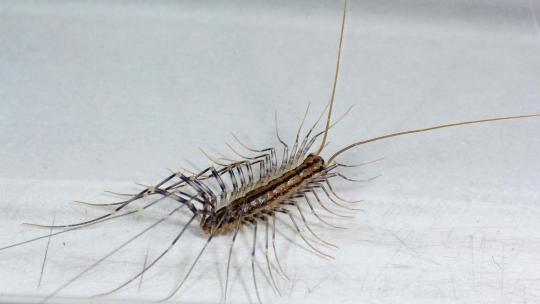
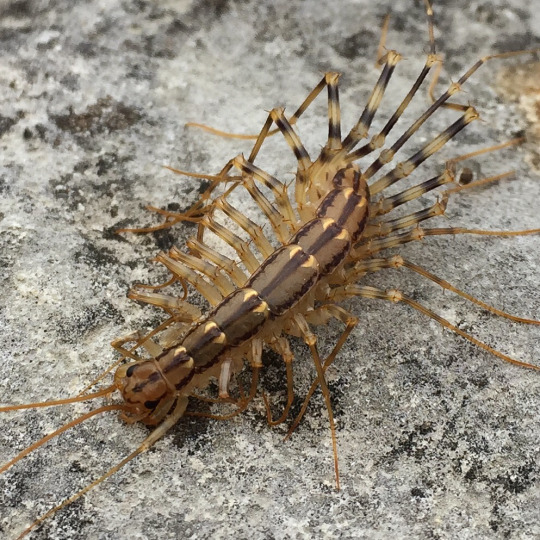
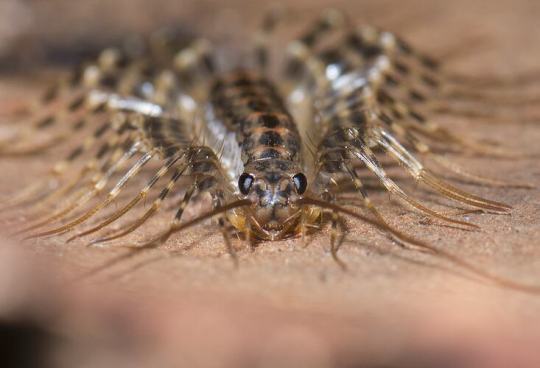
Open Your Home to the Common House Centipede
A common sight in homes throughout Europe, Asia, the Americas, and Australia the common house centipede (Scutigera coleoptrata) is a medium-sized species of centipede originally from the Mediterranean. In the wild, they prefer grasslands and deciduous forests where they can hide under rocks, logs, or leaf litter. These insects have also adapted well to urban development, and are frequently found in basements, bathrooms, and garages, as well as gardens and compost piles.
Like other centipedes, the common house centipede has less than 100 legs; in fact, they only have 15 pairs, with the front pair used only for holding prey or fending off threats. All those legs let the common house centipede move up to 0.4 meters per second (1.3 ft/s) over a variety of surfaces, including walls and ceilings. The actual body of S. coleoptrata is only 25 to 35 mm (1.0 to 1.4 in) long, but the antennae are often as long as the body which can give this insect a much larger appearance. However, they can be hard to spot, especially in their natural environments; their tan and dark brown coloration allows them to blend in seamlessly to surrounding vegetation.
Though they pose little threat to humans, house centipedes are predatory. Their primary food source is other arthropods, including cockroaches, silverfish, bed bugs, ticks, ants, and insect larvae. S. coleoptrata is a nocturnal hunter, and uses its long antennae to track scents and tactile information. Their compound eyes, unusual for centipede species, can distinguish daylight and ultraviolet light but is generally used as a secondary sensory organ. When they do find prey, house centipedes inject a venom which can be lethal in smaller organisms, but is largely harmless to larger animals. This makes them important pest controllers. In the wild, house centipedes are the common prey of rodents, amphibians, birds, and other insects.
The mating season for S. coleoptrata begins in the spring, when males and females release pheromones that they can use to find each other. Once located, the male spins a silk pad in which he places his sperm for the female to collect. She then lays fertilized eggs in warm, moist soil in clutches of 60-150. These eggs incubate for about a month, and the young emerge with only four pairs of legs. Over the next three years, juvenile house centipedes molt 7 times, each time gaining new pairs of legs. After they grow their last pair of legs, immature house centipedes molt an additional 3 times, at which time they become sexually mature. If they can avoid predation, individuals can live up to 7 years in the wild.
Conservation status: The common house centipede has not been evaluated by the IUCN, as it is relatively common both in the wild and in urban areas. Although they have been introduced to areas outside their native range, no detrimental environmental effects have been associated with their spread.
If you like what I do, consider leaving a tip or buying me a ko-fi!
Photos
Joseph Berger
David Paul
Conrad Altman via iNaturalist
#common house centipede#Scutigeromorpha#Scutigeridae#centipedes#myriapoda#myriapods#insects#arthropods#deciduous forests#deciduous forest arthropods#grasslands#grassland arthropods#urban fauna#urban arthropods#europe#north america#south america#asia#australia#oceania#animal facts#zoology#biology
625 notes
·
View notes